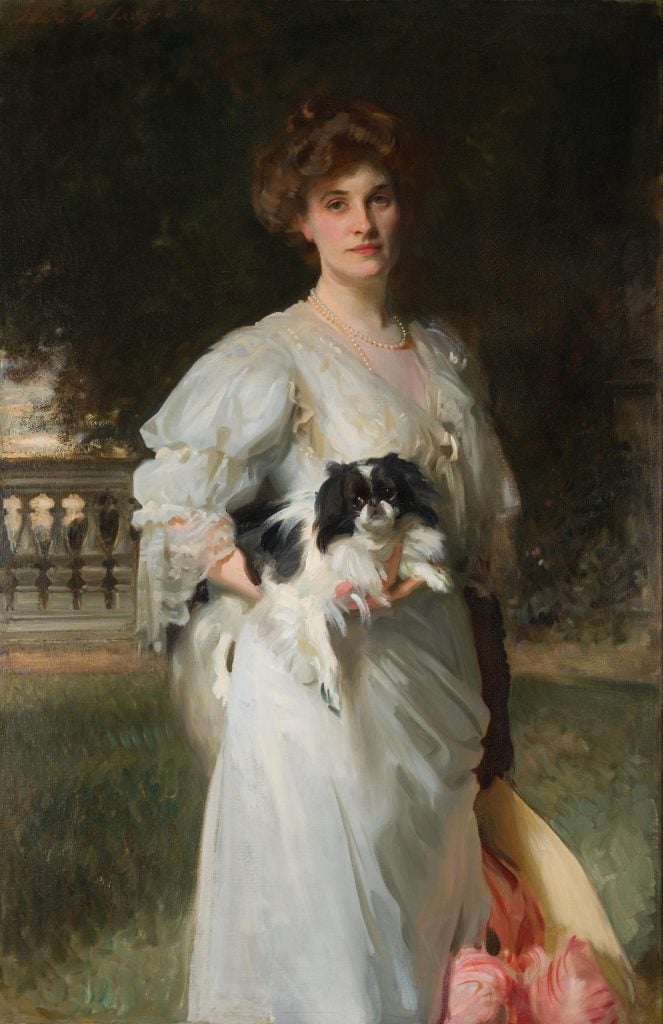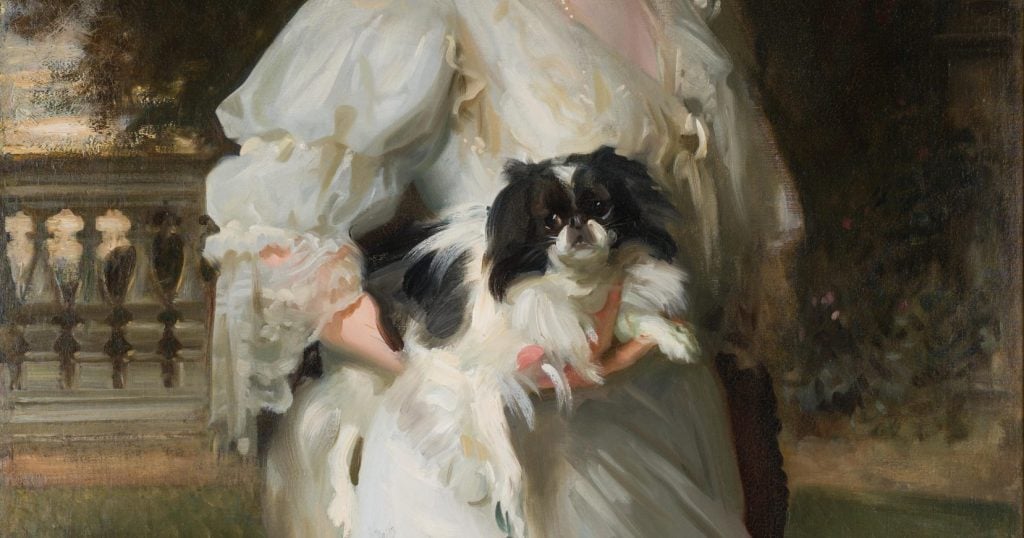Museums & Institutions
The Permanent Collection: John Singer Sargent’s Portrait of Amelia Earhart’s Benefactor
Norton Museum of Art director Ghislain d'Humieres on one of his favorite Sargent portraits.

John Singer Sargent, Portrait of Mrs. Frederick Guest (Amy Phipps)
Norton Museum of Art, West Palm Beach, Florida
Chosen by: Ghislain d’Humières, director and CEO
Amy Phipps Guest had a pioneer spirit—she aspired to be an aviatrix. Those plans were nixed, but that did not prevent her from bankrolling flights by Amelia Earhart. She also was a big supporter of women’s suffrage, putting her own money to work in the effort to win women the right to vote. You see a lot of that determination and passion in her expression.
Sargent was known for his fabulous cache of objets d’art, architectural fragments, tapestries and furnishings. In this painting, he depicts Amy Phipps Guest standing before a backdrop evocative of the 18th century that would be at home in any painting by Thomas Gainsborough, with an ornamental balustrade and other details picked out in his loose brushwork.
That backdrop helps establish Phipps Guest as a member of the American aristocracy, thanks to those classical elements, which would have been at home on any of the estates of the landed gentry in England, where the portrait was painted.

John Singer Sargent, Portrait of Mrs. Frederick Guest (Amy Phipps) (1905).
Photo: Norton Museum of Art.
Sargent’s brushwork brings Phipps Guest and her dog to life. You get a sense of her strong personality: confident, without a hint of self-doubt. The brushwork suggests the stirring of a breeze in the folds and drapes of her white dress, and that dog appears ready to leap from her arm.
This painting had been in the family since the death of Amy Phipps Guest. Her grandson, Alexander Guest, a Miami gemologist and jeweler, recognized that the portrait of his grandmother could be a transformative gift to the Norton Museum of Art’s collection. It’s fitting that it came to the Norton, which is across the Intracoastal Waterway from Palm Beach, where the Guests owned a landmark home, Villa Artemis.
The Norton celebrated the gift of the painting by displaying it with Sargent’s portrait of Phipps Guest’s mother and son. That painting, Portrait of Mrs. Henry Phipps and her Grandson Winston Guest (1906-07), was here for six months thanks to a generous loan from Old Westbury Gardens, a museum that was the Phipps’ longtime summer home.

John Singer Sargent, Portrait of Mrs. Frederick Guest (Amy Phipps) (1905). Photo: Norton Museum of Art.
Both works illustrate how Sargent was one of the last great Realists of the 19th century—he refused to embrace the modern styles that were developing at the end of that century and the beginning of the 20th century. But his work is rooted firmly in the classical styles of such painters as the Spaniard Diego Velázquez and the 17th century Dutch painter Frans Hals, whose broad, loose brushstrokes also influenced artists of Impressionism.
Great technical skill links Sargent with an artist like Rembrandt and with an illustrator like Rockwell. There is storytelling in each of their works. But look at the underlying tension and flow of Sargent’s bravura brushwork—the marks of paint appear careless up close but merge at a short distance to create a living portrait. I think those qualities of shadows and light bring him closer to the world of Rembrandt.
The commissions for portraits eventually consumed Sargent, who finally ended the practice in 1907.
Today, we have Photoshop and other tools to adjust portraits. But in Sargent’s day, the only way to fix a portrait to satisfy a discriminating patron was to paint and repaint, so it was tedious. He once defined a portrait as “a picture in which there is just a tiny little something not quite right about the mouth.” You can see how that would be frustrating. Not painting portraits freed Sargent to work on larger-scale projects and other commissions, like his murals at the Boston Public Library.
—Ghislain d’Humières, director and CEO, as told to Tim Brinkhof
What artwork hangs across from Mona Lisa? What lies downstairs from Van Gogh’s Sunflowers? In The Permanent Collection, we journey to museums around the globe, illuminating hidden gems and sharing stories behind artworks that often lie beyond the spotlight.





